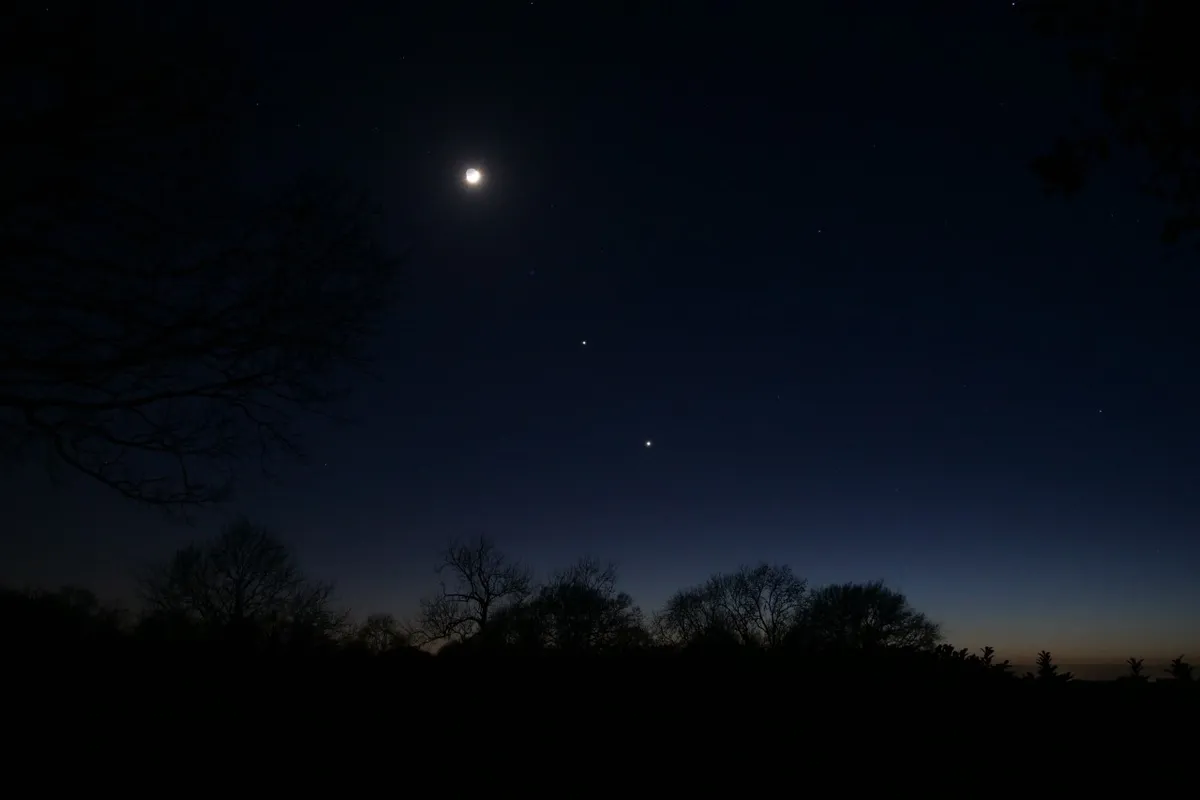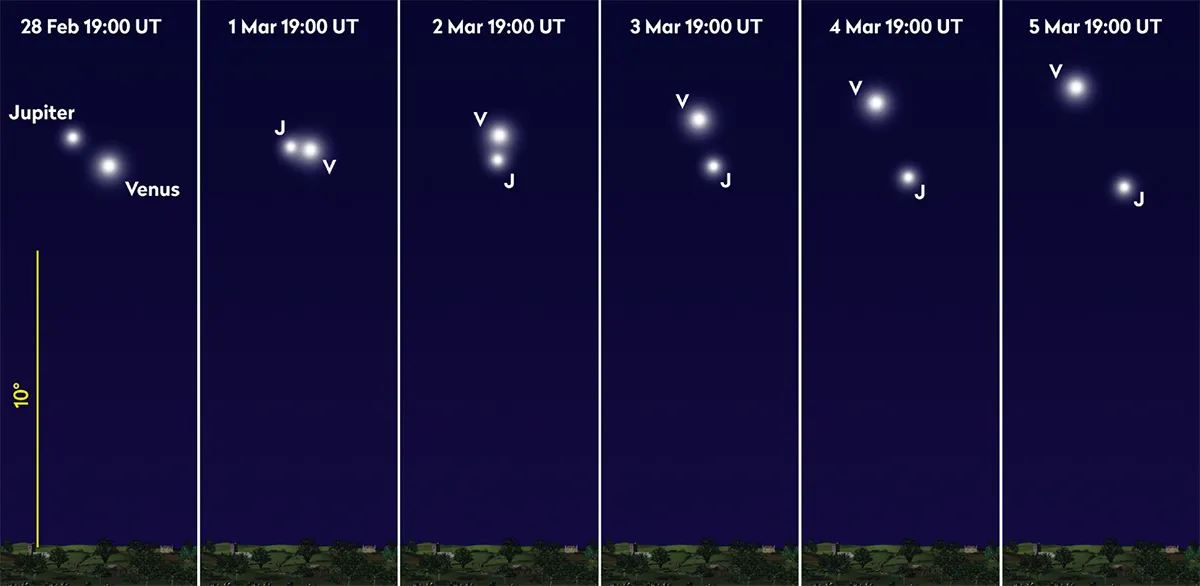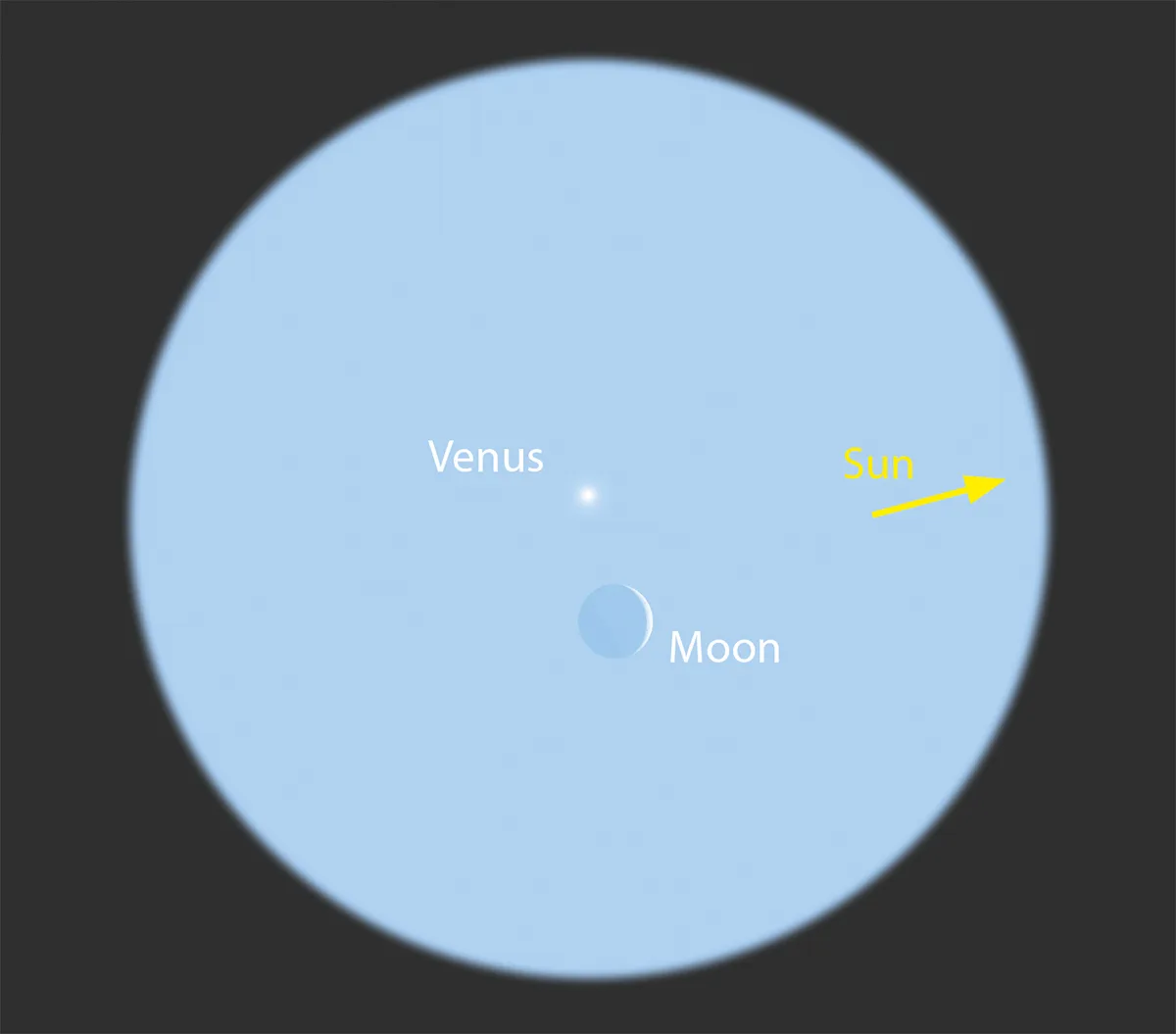For the past week, many of us have been looking up in the evening sky to catch amazing views of Venus, Jupiter and the Moon sitting close together.
The bright planets sit prominently in the night sky, appearing as distinct points of light long before any other stars can be seen with the naked eye.
It's been wonderful, but we're about to witness a very special sight this week: a close evening conjunction of Venus and Jupiter.
Find out more about observing Venus and Jupiter in March
Keep up to date with what's in the night sky by signing up to the BBC Sky at Night Magazine e-newsletter and listening to our weekly Star Diary podcast.

For the UK, the closest evening approach between Venus and Jupiter occurs on 1 March when the planets appear separated by just 36 arcminutes before setting.
The best time to view Venus and Jupiter close together will be around 19:25 UT when they are about 11° up and 38 arcminutes apart under dark sky conditions.
Jupiter will be bright at mag. –1.9, but will be completely outshone by mag. –3.9 Venus.
As has been the case over the past week or so, both planets will be visible with the naked eye, but if you have a pair of binoculars or a telescope, the extra magnification will make all the difference.
Through a telescope, both Venus and Jupiter can be seen in the same field, in a low-power eyepiece.
As 38 arcminutes is about one-and-a-third times the apparent diameter of the Moon, if you have an eyepiece that shows the Moon with plenty of space around it, this should show both planets clearly.

Venus is emerging into the evening sky after inferior conjunction on 22 October 2022.
Consequently it is on the far side of its orbit and appears relatively small at 12 arcseconds with a gibbous phase of 85%.
Jupiter will look almost three times larger at 34 arcseconds. On the evening of 1 March, all four Galilean moons are on display too, lining the event up for a great astrophoto.
But don't stop looking at these amazing planets!
Keep an eye on them for the rest of the month and track how they grow further and further apart as we head through March and into April.
There'll also be a chance towards the end of March to spot Uranus near Venus.
Read on for our guide to spotting these planets throughout the month.
Observing Venus in March

Venus edges further east on the evening of 2 March, remaining close to Jupiter. At 18:15 UT, just after sunset from the centre of the UK, the pair are 45 arcminutes apart.
The sky will still be light but these bright planets fare well.
If you can locate Venus shortly after the pair rise on 2 March, say around 09:00 UT, you’ll be able to catch them in a daylight sky at their narrowest separation of 30 arcminutes.
Then at 10:00 UT during the morning of 24 March, Venus appears 57 arcminutes north of a slender 9%-lit waxing crescent Moon, 24° above the eastern horizon.

Venus’s eastward march has it pass just north of Uranus on 30 and 31 March.
On the evening of 30 March, mag. +5.8 Uranus appears 1.2° south (below left from the UK) of Venus at 21:40 BST (20:40 UT).
The following evening the distance increases to 1.7°, Uranus appearing south and slightly west (below and slightly left, from the UK) of Venus on this date.
Finally, on 26–29 March mag. –1.9 Jupiter and mag. –1.3 Mercury have a series of close evening encounters, coming closest on 27 and 28 March (1.5° then 1.6° apart), low above the western horizon 30 minutes or so after sunset.
This guide originally appeared in the March 2023 issue of BBC Sky at Night Magazine.
